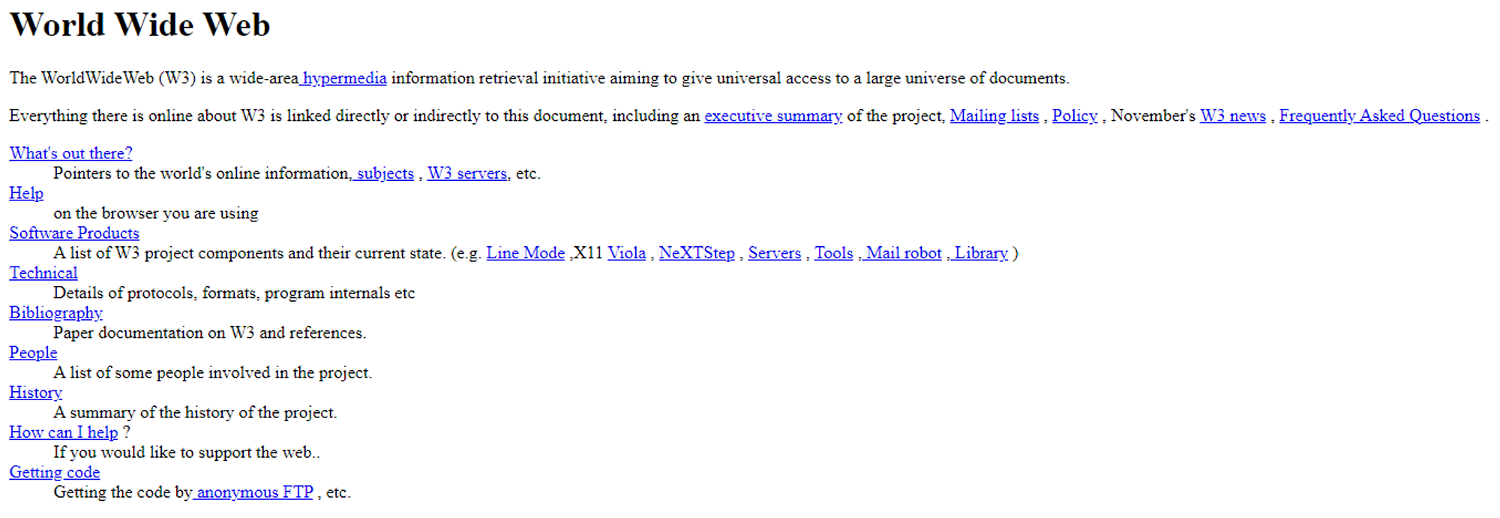Tim Berners-Lee, a British scientist, created the World Wide Web (WWW) while working at CERN in 1989. The Web was created to address the desire for automated information sharing among scientists in universities and institutes around the world.
The WWW's primary concept was to combine the growing technologies of computers, data networks, and hypertext into a powerful and user-friendly worldwide information system.
The world's first website and Web server, here, was hosted on a NeXT computer at CERN.
Below is an image of the world's first website.

The first URL for a Web page was here.

Early Berners-Lee's Web browser, which ran on NeXT machines, demonstrated his vision and included many of the functionality seen in modern Web browsers. It also provided the first Web editing functionality, the ability to amend pages directly from within the browser. This image depicts the browser running on a NeXT computer circa 1993, here.
Although only a few users had access to the NeXT computer platform, on which the initial browser ran, work immediately began on a simpler, 'line-mode' browser that could run on any system. Nicola Pellow wrote it while on a student work internship at CERN.
WWW Berners-Lee's software was released in 1991. It comprised a 'line-mode' browser, Web server software, and a developer library. The program was made available to coworkers using CERN computers in March 1991. A few months later, in August 1991, he announced the WWW software on Internet newsgroups, sparking worldwide interest in the project.
For more info, read here.
